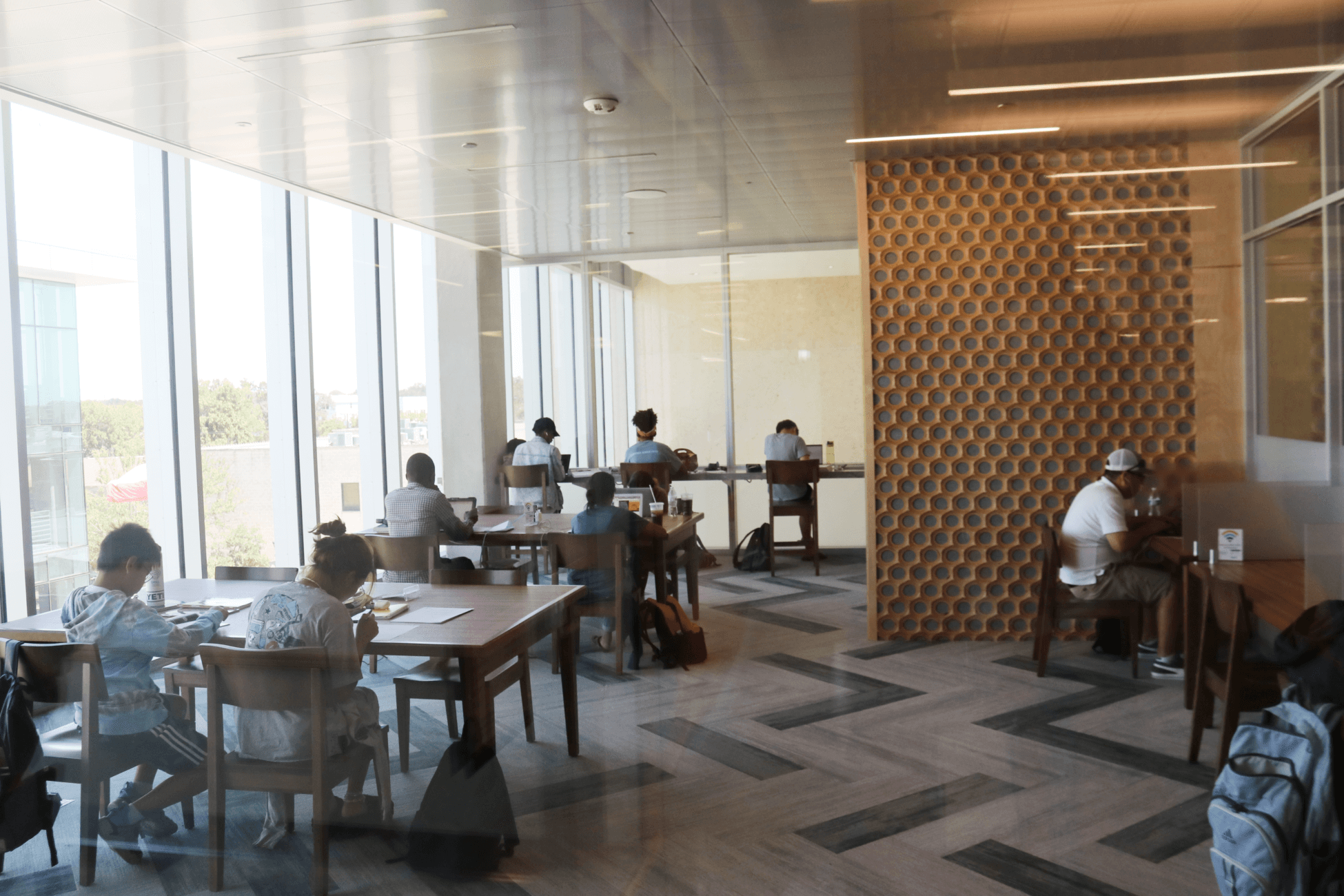Written by: Edward Y., Adult Services Manager
Our staff at RRPL fields an incredible variety of questions at each floor’s service desk. Some patrons need help figuring out a government website, others want to know how to edit a cat photo, and some need to find a book that teaches Japanese. We never know what someone walking up to us might ask.
However, there are certain questions that we hear so often that any two of us could separately make a FAQ list, and many of the entries would be the same. Think things like, ‘Where’s the bathroom?’, ‘Are you open on Sundays?’, etc. One of these constant questions is, “Why do you let people make so much noise in the library, I thought libraries were supposed to be quiet places?” The answer is, libraries used to be places where quiet was required and enforced, but modern libraries have had different priorities thrust upon them.
In the 1980s, a governmental trend began, a philosophy that essentially asked, shouldn’t government agencies and departments be required to justify their existence, and budgets, based on similar criteria as a for-profit business? These criteria often included numbers of customers, frequency of ‘products’ being selected and used, and the like. Essentially, the concept of cost and benefits analysis was applied more and more frequently to institutions that before were considered essential, regardless of how regularly used: museums, libraries, research institutions, etc. And whether this turn of perspective was for the better or worse, (not an opinion any good civil institution should ever state one way or the other publicly), it can clearly be shown that this approach was adopted through most cities and counties in the United States.
In the library world, this meant attendance numbers and turnover rates, (i.e. the number of times a library item is ‘circulated’ or checked out) became crucial and inspected statistics. Where before a library would deem it essential to have a copy of a classic like Hamlet, now the perspective is more, “how many times this year did Hamlet check out? None? Well, perhaps we don’t need to ‘waste’ shelf space with a copy of something no one wants.” Or, “how many people attended the computer skills class for seniors last Thursday? Only two? Well then, we shouldn’t spend tax dollars on staffing such a class.” One last example, “we have 25 worktables set up around the building, but only have 4 or 5 of them occupied at a time. Let’s move the library to a smaller space since they don’t successfully utilize their current resources.”
This shift from obligatory social service to ‘on-the-chopping-block’ meant libraries nationwide became focused on increasing these numbers. And one way to make that happen was to open the space to family activities throughout the building, ensuring larger numbers of folks are using the facility. Another was to make a space more welcoming to cooperative work, whether it’s someone using their phone to conduct business while using the library’s work spaces and wifi, or allowing multiple people to work together in the general areas, also increasing the likelihood that at any time city government stakeholders could visit the library and see lots of activity.
You might ask, “but what about the people who came to a library for quiet? Don’t you risk lowering your numbers by losing them?” What has been found in most U.S. libraries is that there are many fewer people wanting quiet then there are people who want a place for their children to rove freely, (and loudly) or a place they can talk on their phone or to a fellow library patron while working.
This doesn’t mean we’ve abandoned those who crave quiet. We’ve simply had to try options to answer that preference while continuing to offer a facility guaranteed to attract larger crowds.
One attempt that many libraries like RRPL have made were study rooms. These were intended to be reservable spots that patrons could work quietly. Ironically, what actually happened is that most folks take having this spot as a license to be even louder, and thus RRPL has designed its new building to have sound-dampened study rooms. They’re not perfectly soundproof of course, but it is possible to work in one and have a quieter environment even if your study room neighbor is on a virtual meeting call.
And while there is no floor where talking is verboten, we do consider the 3rd floor the ‘Quieter’ Floor. Patrons are allowed to quietly speak to one another at worktables or on the phone, but we do ask visitors to this floor to avoid full-voiced, ‘out-loud’ conversations, and to keep talking on a phone to a few minutes or less. This way, we try to thread the needle and have a balance between patrons who want to converse within their group while working on a project and those individual workers who want a quieter environment to concentrate.
However, our ultimate solution was our Quiet Reading Room. A feature in many U.S. libraries, RRPL’s new building finally offered the increased space to allow this old-school option. In this room, found to the right when exiting the elevators and stairwell, is the one space in the building where we strictly enforce silence, just like a library would’ve around the turn of the 20th century. In this space, no talking is allowed at all, and even headphone music is required to be quiet enough that no one else can hear anything. The only sounds should be the rustling of papers, or the tapping of laptop keys. An occasional sigh, perhaps in remembrance of a time when an entire library building could offer such calm and potential clarity, is also allowed.
So come by and try working on your assignment in our 3rd floor Quiet Reading Room. And please let us know if someone is perhaps making too much noise in there, we relish our opportunities to revel in a bit of classic librarian shushing.



